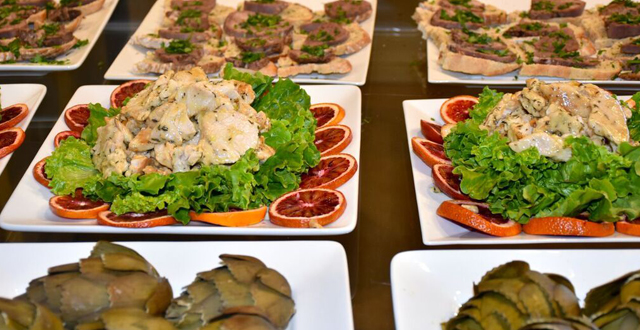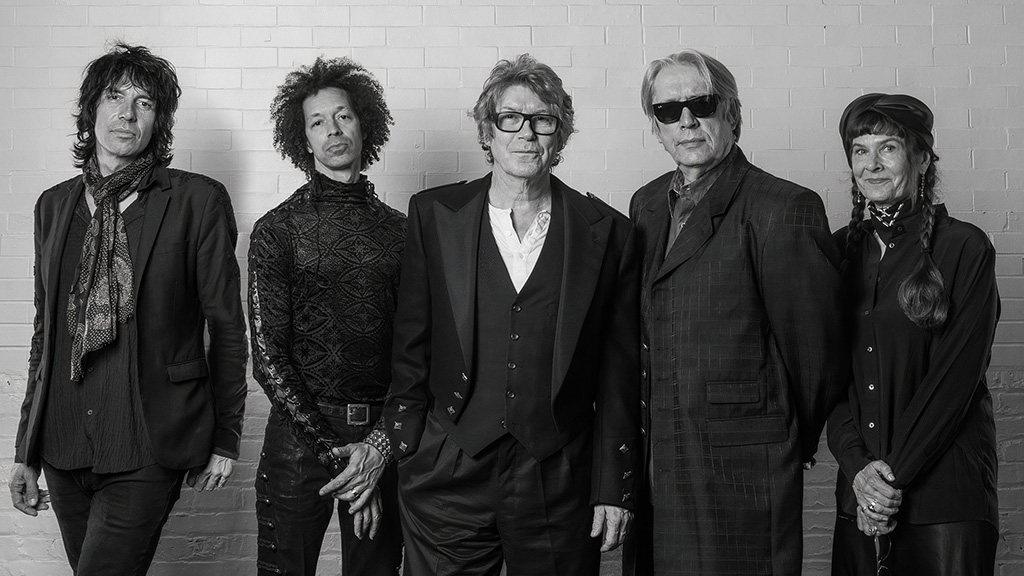400-Year-Old Menu Recreated by Food Historian Ken Albala

For some, the term ‘foodie’ carries a negative connotation. Personally, I prefer to the term ‘food enthusiast’ — although it fails to describe what feels more like a hot and heavy love affair — and this past Thursday evening, I met with some like-minded people to explore a little of our shared fascination with the culture and history surrounding food.
To be precise, we met in the penthouse of the Pacific Heights Tower, overlooking Lafayette Park and nearly everything along the Bay from the Golden Gate Bridge to the Transamerica Tower. About fifteen of us, led by renowned food historian and author of about a dozen books on cooking and 18th century history, Ken Albala, were taken on a culinary journey through a four-course, twenty-dish, meal and wine pairing. Albala, now Director of Food Studies at the University of the Pacific, welcomed us warmly into his kitchen as if we were royalty, attending a banquet fit for an Italian duchess. In fact, he lifted all the recipes from Dello Scalco, written by Giovanni Battista Rossetti, a book commemorating dishes served at a marriage banquet in Urbino, Italy, in 1584.
The meal was typical of one of its time, a “polyphony of flavors”, as Albala described them, meant to compliment one another in unison and uniquely unlike modern cuisine where sweet and savory elements work mainly separate from one another. It began by tasting a number of spices in their raw form, one of which was bitter almond, found along the Calaveras River in California’s Central Valley and poisonous to humans in large doses. Another, ambergris, or sperm whale vomit, tasted familiarly like charcoal and could run about $100 a pop from unnamed online sources.

Ambergris, or sperm whale vomit
After sampling a number of spices and learning about their historical journey through Venice prior to the 19th century, we took our seats for Alba’s lavishly organized meal. While some traditional plates could be identifiable in one way or another today across a multitude of cuisines, like the Prosciutto on Golden Toast with Fried Sage and Parsley and Tart of Little Beans, the Blancmange with Candied Almonds, served during our second course, could only be likened to a bizarrely sweet version of a modern chicken salad. Ground and tendril-like, gooey chicken was molded into the shape of a baguette and covered in pastel-colored candied almonds scaling its sides like Stegosaurus scales.
Sitting among fellow food enthusiasts, Albala told us the story of how a small group of professors and historians who shared a similar love of food and felt its study deserved wider attention among academics. With a new provost at the University of the Pacific in Stockton, a number of educators were able to rally for the launch of a handful of small master’s programs for fields that had shown a significant growth in demand and potential over the past decade.
The program, Albala said, is not necessarily for self-proclaimed foodies or those looking to be the next Anthony Bourdain. It can be useful for a number of professionals across different fields, from nutritionists looking to understand food from a broader historical context, to lawyers specializing in food safety. Beyond offering courses in the humanities and social sciences, the programs will help students to analyze food networks from a business and marketing perspective to potentially solve important issues in supply chain management and distribution throughout the food industry.
Those looking to perfect their craft or seeking out more information should visit the Master of Arts in Food Studies open house Thursday, May 28, at 5:30pm at the University of the Pacific San Francisco Campus, 155 5th St. (Minna entrance). Guest speaker Erica Peters, a professor and food writer, will also be in attendance to talk about her book “San Francisco: A Food Biography.”







